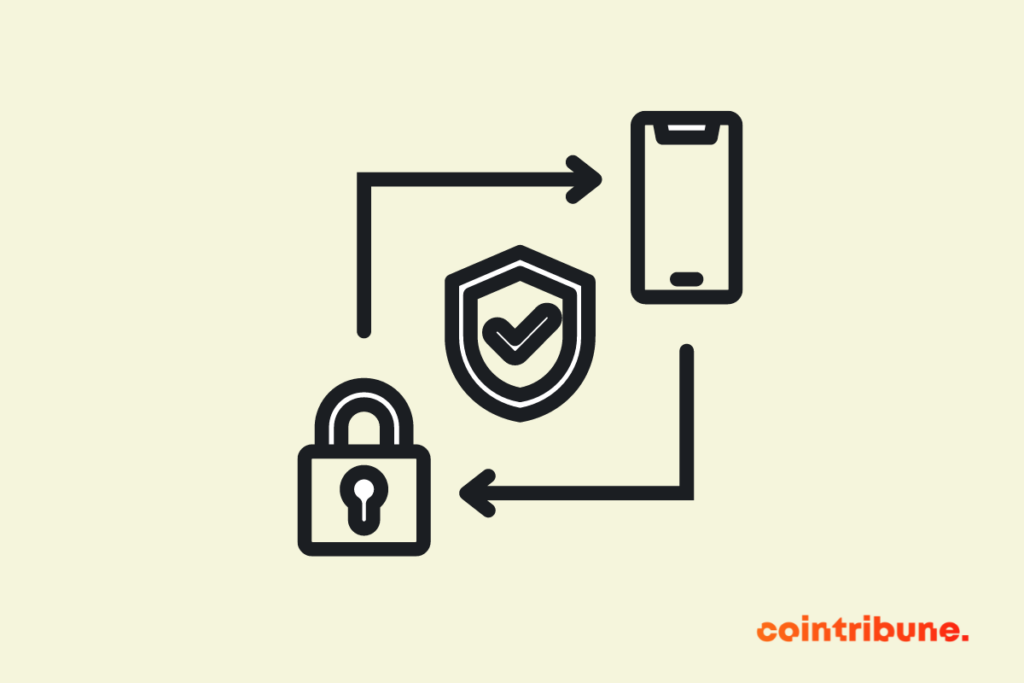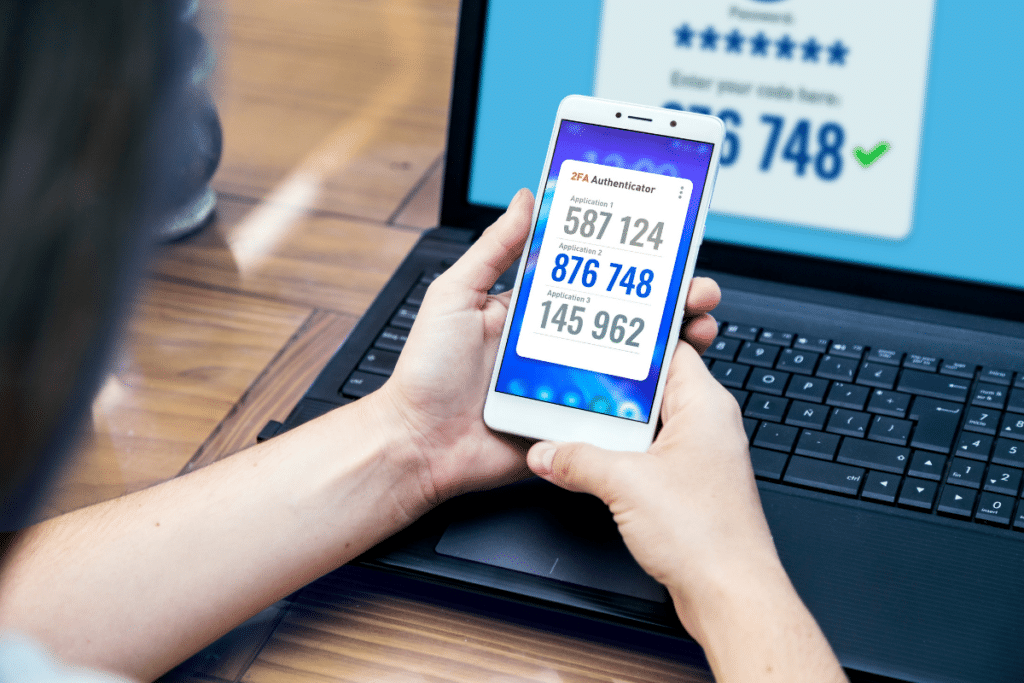Protect Your Bitcoins with 2FA Authentication: A Complete Guide
The bitcoins contained in your wallets do not benefit from optimal protection with the traditional passwords associated with them. Therefore, you must add an additional layer of security such as two-factor authentication (2FA) to prevent any intrusion and better protect your assets. In this guide dedicated to Bitcoin security tips, we will explore the crucial importance of security in the cryptocurrency universe, and how implementing two-factor authentication can play a crucial role in protecting your precious digital assets such as bitcoin. We will review the different 2FA methods, their implementation on the most popular exchange platforms, and the available alternatives to further enhance the security of your accounts.

Understanding Two-Factor Authentication
Two-factor authentication adds an extra layer of protection to your online accounts. It is particularly important in the field of cryptocurrencies due to the decentralized and irreversible nature of transactions.
Definition and Principle of Two-Factor Authentication
Two-factor authentication is a method of verifying a user’s identity that requires the user to provide two distinct types of identity proofs. This generally involves something you know (like a password) and something you possess (like a code sent via SMS or generated by an app). By combining these two factors, it becomes much more difficult for a hacker to access your accounts.
Benefits of 2FA for Bitcoin Holders
The benefits of 2FA for Bitcoin holders include better protection against hacking attempts, reduced risk of fund theft, and increased confidence in the security of your crypto accounts. Additionally, setting up 2FA is generally simple and quick, making it a crucial step to ensure the security of your digital assets without wasting time.
Types of 2FA Available
There are several types of 2FA available for cryptocurrency users. Among the most common are codes sent via SMS, authentication apps like Google Authenticator and Authy, and hardware security keys. The table below summarizes the types of 2FA available on the market:
| Authentication Method | Description |
| SMS | A unique code is sent to the user via SMS to their mobile phone. The user must enter this code to complete the authentication process. |
| Authentication App | Dedicated mobile applications, such as Google Authenticator or Authy, generate security codes that change regularly. These codes are used in conjunction with your password for secure authentication. |
| Hardware Security Key | A physical key, like YubiKey, is used for authentication. The user must insert this key into a USB port or use a wireless connection to verify their identity. |
| Backup Code | When setting up 2FA, the user receives a list of backup codes. These codes can be used as an alternative authentication method if access to the app or security key is lost. |
| Biometrics | Some cryptocurrency wallets support biometric authentication, such as fingerprint or facial recognition, for a more convenient authentication experience. |
Each cryptocurrency platform or wallet may offer different 2FA authentication methods. Be sure to check the specific options available on the platform you are using. Additionally, it is recommended to use multiple authentication factors to reinforce the security of your cryptocurrencies.
Setting Up 2FA on Crypto Platforms
Setting up 2FA on crypto platforms is essential to protect your accounts and assets. To do this, follow the instructions provided by each platform and choose the type of 2FA that best suits your needs.
Choosing the Right Type of Two-Factor Authentication
To choose the right type of two-factor authentication, consider the ease of use, availability, and security offered by each method. SMS codes are convenient but can be intercepted. Apps like Google Authenticator and Authy offer a higher level of security but require access to a smartphone. Hardware security keys provide maximum protection, but may be more expensive and require a physical device.
Configuration Steps on Major Exchanges
Here’s how to set up 2FA on major cryptocurrency exchanges:
2FA Setup on Binance
- Log in to your Binance account and go to the “Security” section of your profile;
- Click “Enable” next to “2FA Authentication” and choose between SMS or Google Authenticator;
- Follow the instructions to complete the setup.
2FA Setup on Coinbase
- Log in to your Coinbase account and go to the “Settings” section of your profile;
- Click on “Security” and select “Enable two-factor authentication”;
- Choose between SMS or an authentication app and follow the instructions to complete the setup.
2FA Setup on Kraken
- Log in to your Kraken account and go to the “Security” section;
- Click on “Add a Key” under “Two-Factor Authentication” and choose your preferred method;
- Follow the instructions to complete the setup.
2FA Setup on Bybit
- Log in to your Bybit account and go to the “Security” section of your profile;
- Click “Enable” next to “Google Authenticator” and follow the instructions to complete the setup.
Managing 2FA for Secure Access
To manage 2FA, it is important to keep your recovery codes secure, regularly update your authentication methods and periodically check for suspicious login attempts on your accounts.
What to Do in Case of Loss of the 2FA Device?
If you lose your 2FA device, the first step is to immediately contact the customer service of the relevant exchange platform. You will generally be asked to provide detailed information to prove your identity. These verification procedures may include security questions, identification documents, or even proof of past transactions.
It is also strongly recommended to keep a copy of your 2FA recovery codes in a safe place. These codes are usually provided during the initial 2FA setup and can help you regain access to your account in case of loss of the device.

Tips for Keeping Your 2FA Codes Secure
Here are some tips to ensure the security of your 2FA codes:
- Do not store your recovery codes on an internet-connected device;
- Keep a paper copy of your recovery codes in a safe place, like a safe;
- Use reputable authentication apps and avoid unknown or unverified apps;
- Never share your 2FA codes with anyone.
Possible Disadvantages of Two-Factor Authentication
Although it is a formidable security method, two-factor authentication has some disadvantages:
- Dependence on mobile devices or physical keys, which can be lost, stolen, or damaged;
- Risk of phishing, where hackers may trick users into providing their 2FA codes;
- Increased complexity for novice users, which may lead to mistakes or difficulties;
- Additional costs for hardware keys or international SMS;
- Limitation of access remotely or in emergency situations, when authentication factors are not available;
- Existence of technical vulnerabilities or security flaws in 2FA apps.
Despite these disadvantages, two-factor authentication remains an important security measure to protect digital funds.
Alternatives and supplements to 2FA authentication
In addition to 2FA authentication, there are other security methods to protect your accounts and crypto assets.
Multi-factor authentication (MFA)
Multi-factor authentication (MFA) is a more advanced approach to authentication that uses three or more factors to verify a user’s identity. This can include elements such as biometrics, fingerprints, or facial recognition, in addition to traditional 2FA methods.
Biometric authentication
Biometric authentication uses unique characteristics of your body, such as fingerprints, facial recognition, or voice recognition, to verify your identity. This method offers a higher level of security but may be more difficult to implement and use.
Hardware wallets for enhanced security
Hardware wallets, or hard wallets, are physical devices that store your cryptocurrency private keys offline, which protects them from online attacks and theft. By using a hardware wallet in conjunction with 2FA authentication, you can greatly enhance the security of your digital assets. You need to choose the hardware wallet that meets your needs and has many interesting features.
Conclusion
In conclusion, two-factor authentication (2FA) is an essential security measure for protecting your bitcoins and other digital assets. By understanding the different 2FA methods, carefully integrating them into your exchange accounts, and adopting additional practices such as backing up your Bitcoin wallet, you can significantly minimize the risks associated with transactions and the storage of cryptocurrencies. Be sure to adopt a solid Bitcoin account recovery strategy. This becomes an indispensable asset for recovering your assets in case of lost or compromised access. Therefore, a thorough understanding of 2FA, meticulous implementation on your exchange platforms, and a rigorous backup and recovery process can greatly contribute to the protection and longevity of your digital assets.
Maximize your Cointribune experience with our "Read to Earn" program! For every article you read, earn points and access exclusive rewards. Sign up now and start earning benefits.
Diplômé de Sciences Po Toulouse et titulaire d'une certification consultant blockchain délivrée par Alyra, j'ai rejoint l'aventure Cointribune en 2019. Convaincu du potentiel de la blockchain pour transformer de nombreux secteurs de l'économie, j'ai pris l'engagement de sensibiliser et d'informer le grand public sur cet écosystème en constante évolution. Mon objectif est de permettre à chacun de mieux comprendre la blockchain et de saisir les opportunités qu'elle offre. Je m'efforce chaque jour de fournir une analyse objective de l'actualité, de décrypter les tendances du marché, de relayer les dernières innovations technologiques et de mettre en perspective les enjeux économiques et sociétaux de cette révolution en marche.
The views, thoughts, and opinions expressed in this article belong solely to the author, and should not be taken as investment advice. Do your own research before taking any investment decisions.